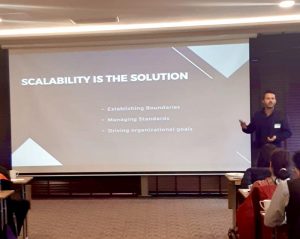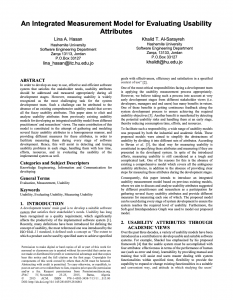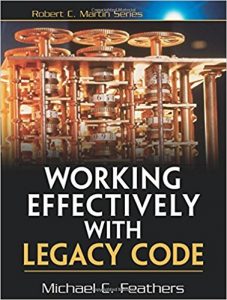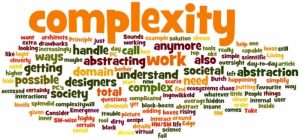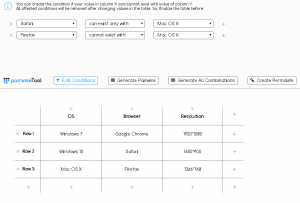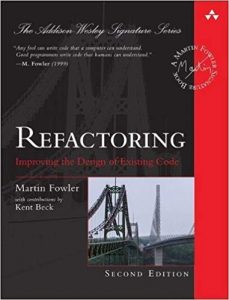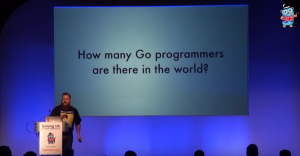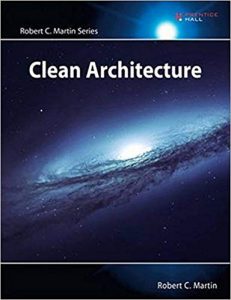Great contribution and very inspiring insights from the speakers. The presentation was about “Scaling Automation Strategy”. Also, I had a chance to present a case study of my team’s latest work. Thanks to TestingMind organization for having us there… Here is the presentation…
Author: berkkibarer
An Integrated Measurement Model for Evaluating Usability Attributes
In order to develop an easy to use, effective and efficient software system that satisfies the stakeholder needs, usability attributes should be addressed and measured appropriately during all development stages. However, measuring usability is widely recognized as the most challenging task for the system development team. Such challenge can be attributed to the absence of an existing comprehensive usability model that covers all the fuzzy usability attributes. This paper aims to elicit and analyze usability attributes from previously existing usability models for developing an integrated usability model from different practitioners’…
The Analytic Hierarchy Process
AHP is one of the main mathematical models currently available to support the decision theory. When looking into how organizations decide over which projects to execute, we notice a constant desire to have clear, objective, and mathematical criteria (Haas & Meixner, 2005). However, decision making is, in its totality, a cognitive and mental process derived from the most possible adequate selection based on tangible and intangible criteria (Saaty, 2009), which are arbitrarily chosen by those who make the decisions. This paper also discusses the importance and some possible criteria for…
Working Effectively with Legacy Code – Michael Feathers
In this book, Michael Feathers offers start-to-finish strategies for working more effectively with large, untested legacy code bases. This book draws on material Michael created for his own renowned Object Mentor seminars: techniques Michael has used in mentoring to help hundreds of developers, technical managers, and testers bring their legacy systems under control.This book also includes a catalog of twenty-four dependency-breaking techniques that help you work with program elements in isolation and make safer changes.
Optimizing Test Strategy In Practice – ProActors
Host Speakers: Berk Kibarer – Tunç Kavaklıoğlu Guest Speaker: Serkan Yanardağ Tunç Kavaklıoğlu and Me had some great time and talk with our guest speaker Serkan Yanardağ at TestJumper’s session. Thanks to all who came and shared their experiences with us.
Reduced Structural Complexity With Examples
Code quality is -should be- one of the main concerns of a software developer. While designing the internal structure, it is important to avoid increasing the structural complexity -cyclomatic complexity, cognitive complexity, halstead volume, maintainability index and such…- which exposes to reliability, maintainability and testability problems. Factory pattern design seemed like a good place to start explaining how to work on complexity problems. The reason, Gürel and I picked factory pattern, is because its most common usage -no offense, this is just one way of doing it :)- simply turns…
Combinatorial Testing
If you still don’t use it to manage your risk factor and calculating the combinations of AUT, take a quick look below; AllPairs Online Tool : https://pairwise.teremokgames.com/4s8/ AllPairs Perl : http://www.satisfice.com/tools/pairs.zip
Refactoring (2nd Edition – 2018): Improving the Design of Existing Code – Martin Fowler
Fully Revised and Updated–Includes New Refactorings and Code Examples “Any fool can write code that a computer can understand. Good programmers write code that humans can understand.” —M. Fowler (1999) For more than twenty years, experienced programmers worldwide have relied on Martin Fowler’s Refactoring to improve the design of existing code and to enhance software maintainability, as well as to make existing code easier to understand. This eagerly awaited new edition has been fully updated to reflect crucial changes in the programming landscape. Refactoring, Second Edition, features an updated catalog of refactorings and includes…
Golang vs SOLID – Dave Cheney
Dave Cheney explains how SOLID principles can be applied to Go language and gives insight and a piece of his mind on how we developers are supposed to react to both technological and philosophical changes.
Clean Architecture: A Craftsman’s Guide to Software Structure and Design – Robert C. Martin
By applying universal rules of software architecture, you can dramatically improve developer productivity throughout the life of any software system. Now, building upon the success of his best-selling books Clean Codeand The Clean Coder, legendary software craftsman Robert C. Martin (“Uncle Bob”) reveals those rules and helps you apply them. Martin’s Clean Architecture doesn’t merely present options. Drawing on over a half-century of experience in software environments of every imaginable type, Martin tells you what choices to make and why they are critical to your success. As you’ve come to expect from Uncle Bob,…
